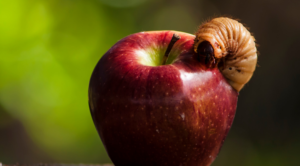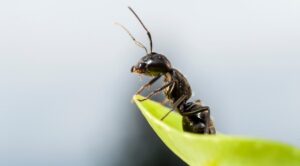Homeowners are no stranger to the threat of pests, be they in rodent or insect form. If you are a gardener then a pest you will be particularly familiar with is the slug. Whilst these pests are generally considered to be common in rural areas, they are actually a problem in suburban and urban areas too. Certain species are more destructive and prevalent than others but the slug is common all over the country in one form or another. Even if you live in the heart of London, the minute you enter a park, use an allotment, have a garden or even a few potted plants outside, you can expect slugs. You may not think slugs call for pest control – London being very much an urban centre – but they do; especially invasive species like the Spanish slug. The Spanish slug is not a pest native to the UK but it is very much established here and causes problems for homeowners up and down the country, even in the heart of London. It came to the UK as part of the Great Pest Migration which has seen hundreds of invasive pests using human migration routes to spread throughout the world. The Spanish slug is one of the event’s most successful species so let’s take a closer look at its story.
Name: Spanish Slug (Arion vulgaris)
Appearance: Normally brown or reddish brown in colour, though bright orange individuals are possible. Tentacles are always darker than the body colouring. Colour variations occur across the species but not within the same population
Height/Weight:An adult Spanish slug is between 80mm and 120mm in length
Characteristics: The Spanish slug is destructive to horticulture. It also has a tendency to kill and eat the weaker or dead individual of the species. When disturbed these slugs secrete excessive amounts of mucus; when people try to dispose of the odd individual with boiling water, the mucus turns the water yellow
Diet: Spanish slugs eat a variety of things; root vegetables and soft fruits are popular in their diet but so are sweet peas, beans, courgettes and broccoli which they are able to eat with their numerous tiny teeth. There have even been reports of these slugs feeding on mice and rabbit carcasses as well as on other slugs and snails
Habitat: Originally from warmer regions, these slugs fare well in the temperate UK climate; damp, warm and with plenty of lush horticulture to devour. They are usually found in gardens and vegetable patches which provide an ideal spot for living and laying eggs, not to mention an ample food supply. They can also live in natural habitats like forests, riversides and meadows
The Spanish slug is considered a pest everywhere, in the Iberian Peninsula where it is indigenous and in areas it has been introduced, like the UK. Though no specific evidence of the Spanish slug’s origin has been found, it is believed to have originated in Spain and the western or south-western region of France. It has spread throughout Europe and established itself in countries like Germany, Sweden, Croatia and even Iceland. It was first recorded in the UK in 1954, having found its way here in soil and crops traded between the UK and other infested countries.
This air-breathing member of the round-back land slug family has thrived in the UK for many reasons, not least the habitat we provide and lack of natural predators. Slugs are normally they prey of hedgehogs, some birds, some amphibians and some large species of ground beetle. The Spanish slug however does not seem to be subject to the same predators, meaning it is able to thrive unregulated. Another factor in the Spanish slug’s success is its reproductive behaviour. As a hermaphrodite species, a single slug can start a massive infestation. One slug can lay hundreds of eggs at a time which is fine in their native dry climates, where many of those eggs would dry up before hatching. However, in the wet and mild northern European countries the slug has invaded, there are no drought restrictions on the eggs. It has even come to light that the Spanish slug has bred with the UK’s native black slug, introducing a new, more frost-resistant variety of the species. This new generation worsen the infestation crisis which will likely become more serious as the winter will not help to control the population.
So with optimum living conditions, an exceptional reproductive process, no natural predators and a high tolerance to the elements it seems the destructive and invasive Spanish slug is set to continue its reign over the UK’s cultivated and natural habitats. Luckily infestations can be eliminated by professional pest control companies but there is no denying that the Spanish slug is one of the Great Pest Migration’s most successful species.




